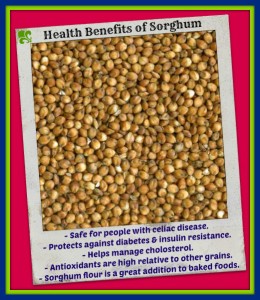 Recently, news about the grain, sorghum, which is popularly known as an ingredient in many gluten free products, has been making waves in the world of agriculture.
Recently, news about the grain, sorghum, which is popularly known as an ingredient in many gluten free products, has been making waves in the world of agriculture.
Could this be the new grain on the food market that will possibly replace corn? Corn requires elements like nitrogen and water to be cultivated. Large amounts of runoff pollution and water usage for corn cultivation has deemed these particular growing locations some of the “largest dead zones” in the world. This refers to the areas where agricultural fertilizers have accumulated in water ways which can potentially cause a major threat to the environment including the animals, plants, and people in it.
Also called milo, sorghum needs less water and nitrogen and costs less than corn or other grains! Originally used in Africa, sorghum is used in breads and cereals, which is why its popularity has increased in gluten free products.
In terms of health, sorghum is a whole grain that is naturally gluten free. It is also produced from specialty seeds which are not genetically modified, unlike corn grains. Sorghum can be high in antioxidants and fiber and low in fat. It also has a low glycemic index which is a great option for diabetics.
The entire sorghum grain may be consumed (bran, endosperm, and germ) which contains fiber, carbohydrates, protein, fat, and B vitamins. Overall, sorghum is more sustainable and cost effective than grains like corn or soybeans. Although less bushels of sorghum are usually produced compared to corn, future technological advancement may aid in production improvement. With continual food development sorghum is predicted to become more popular in gluten free foods and beverages with an abundance of health and economic advantages.
Check out Bob’s Red Mill sorghum flour for gluten free cooking and baking!
Thanks to guest blogger Callie Carioti, Nutrition & Dietetics student at Miami University for contributing this post!
